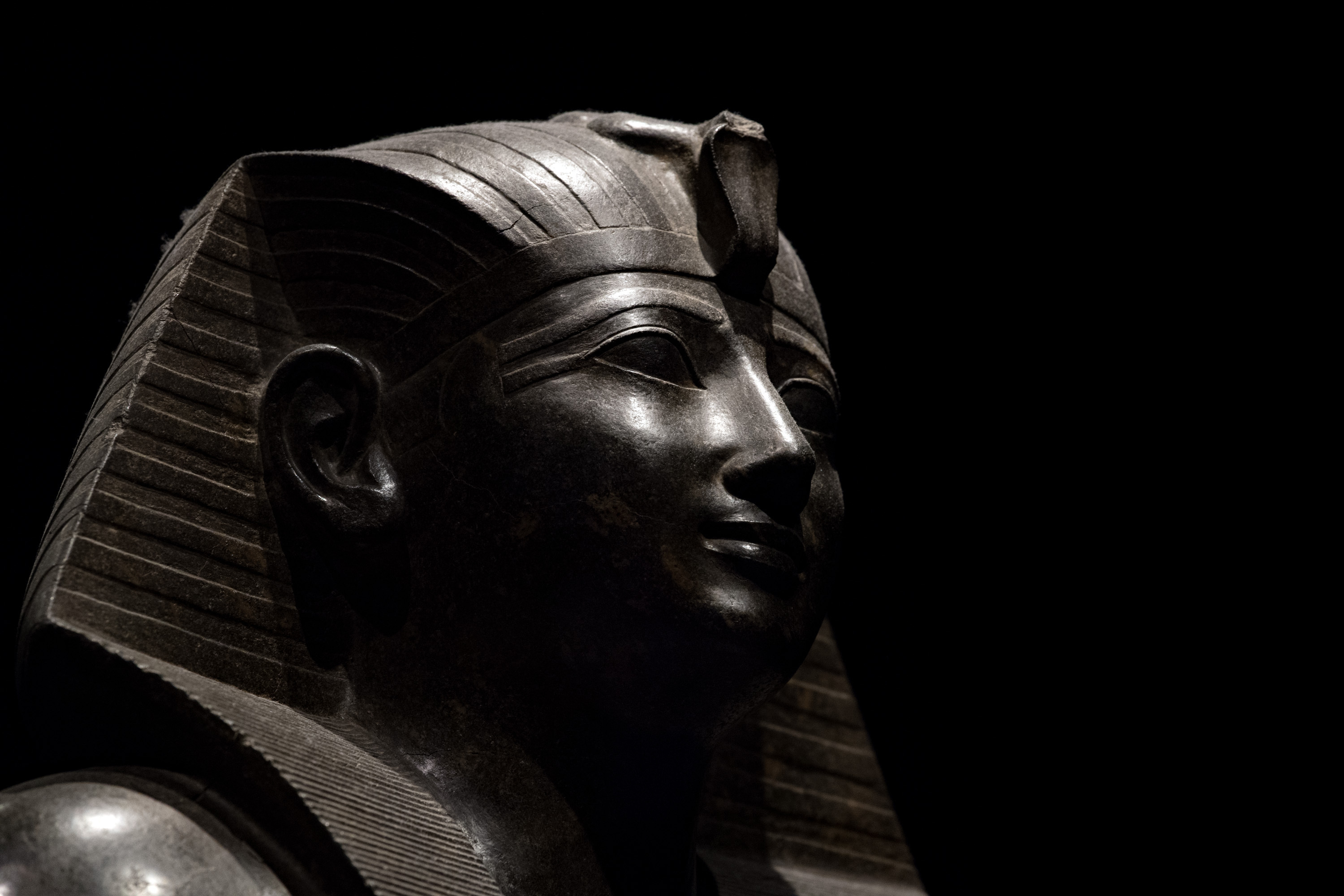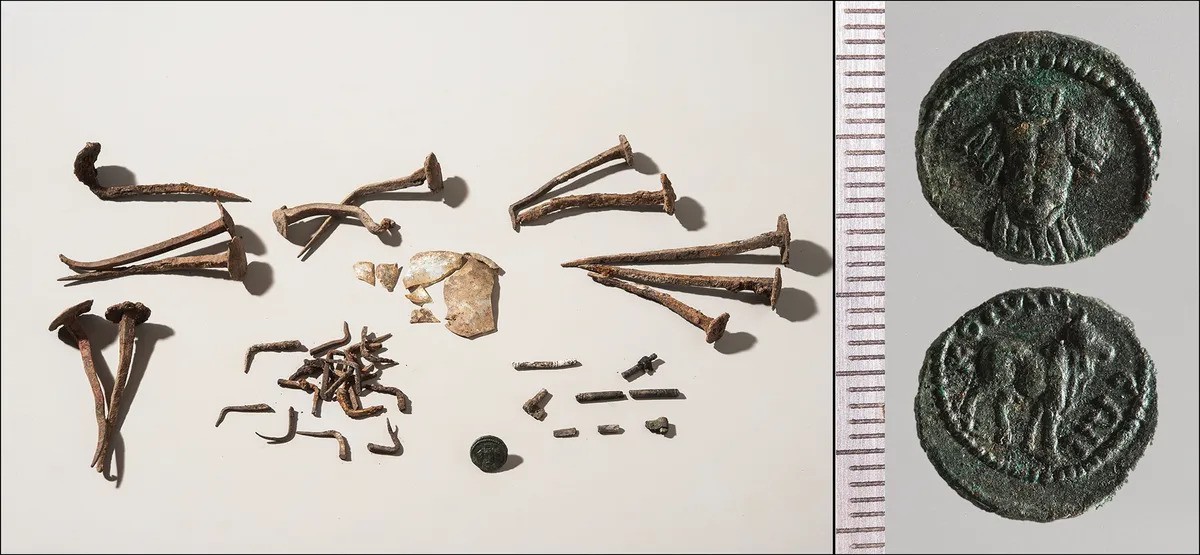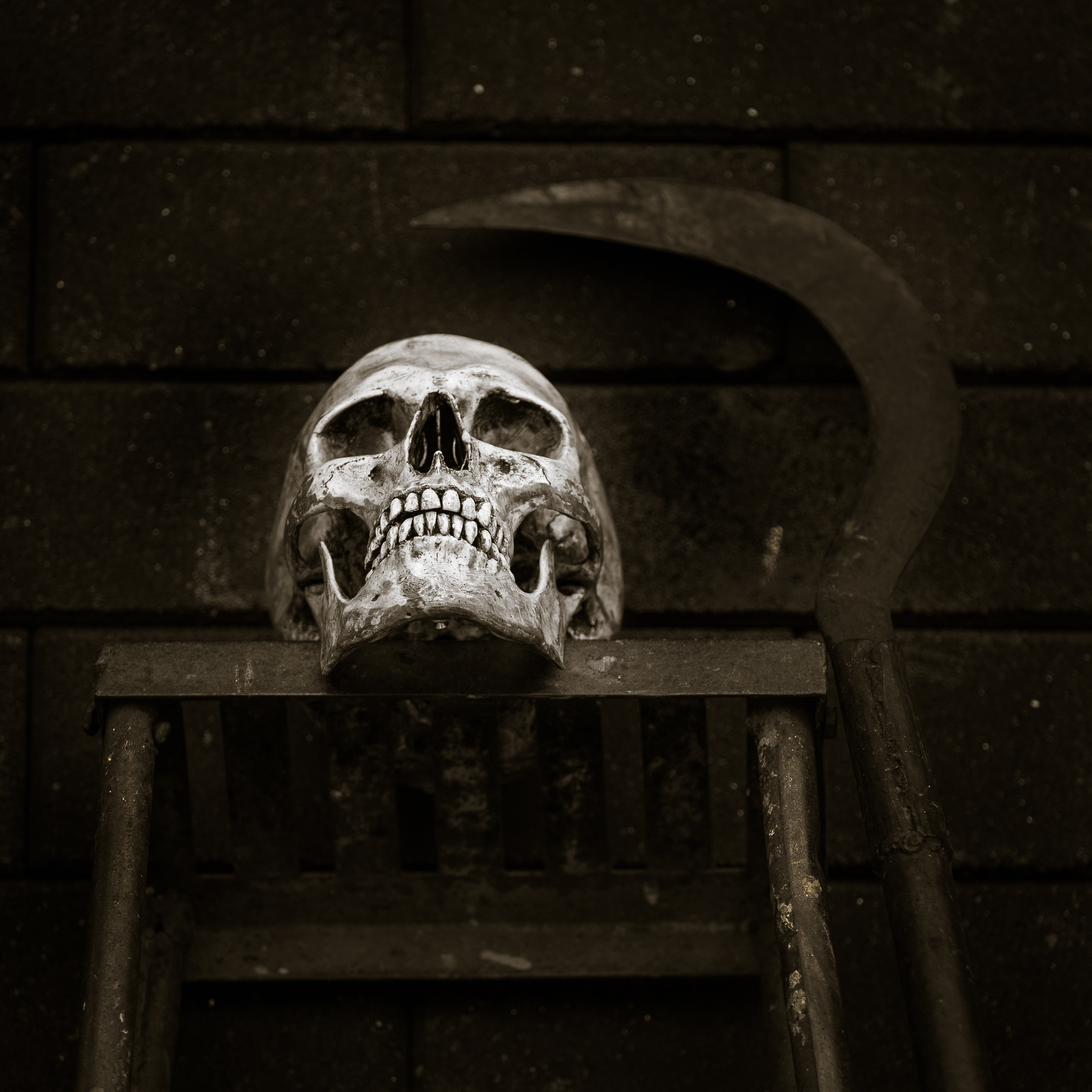We like to think of ourselves as living in a rational, enlightened time – but when it comes to death, all bets are off. Superstitions run rampant, even if we don’t think of them as such: we “don’t speak ill of the dead”; we imagine our loved ones lingering presence in our lives even years after they’re gone; we use euphemisms like “pass on” or “leave” rather than confront the reality that they are, in fact, capital-D, Dead.
ADVERTISEMENT
But for all our silly little traditions, we don’t have anything on the things believed by our ancestors. For them, death was less “period of existential discomfort”, and more “time to take serious measures to protect the whole village against demons”.
As a result, burials were not just a community ritual to see off the deceased, but a serious process to protect the living – as well as the dead. For example…
Ancient Egypt: worked to death

Why bury one person when you can bury hundreds?
Image credit: Andrea Izzotti/Shutterstock.com
Few cultures have ever gone as hard for death as the Ancient Egyptians. As far as they were concerned, life didn’t start until you were dead – and they intended to enjoy it as much as possible.
For the pharaohs of the first dynasty of Egypt, an afterlife of luxury required one simple thing: the hundreds and hundreds of loyal servants, court officials, artisans, guards, wives and concubines, and everybody else who labored to make life as plush as possible here on Earth.
Of course, it was no use trying to hire a whole new cohort once you reached the Field of Reeds. Much easier would be to just take the whole lot with you, right? And guess what: if you’re the pharaoh, they just let you.
“[The] tradition, so far as we can ascertain, began with the funeral of the very first king of the First Dynasty, Hor-aha,” wrote Ellen Morris, Professor of Ancient Studies at Columbia University, in 2007. “To honor and accompany this founding father of the unified kingdom, thirty-five people were slain at his tomb and twelve more were laid to rest around the three funerary enclosures that date to his reign.”
ADVERTISEMENT
Rather than the wholesale riots that you would expect this to provoke – after all, imagine if you had to die just because your boss Angina Joe finally kicked it – the ritual sacrifice of a few dozen innocent butlers and builders “appears to have been wildly successful,” Morris pointed out, “for at the funeral of Hor-aha’s successor, some 318 people were interred around the royal tomb, while another 269 ringed the funerary enclosure.”
Killing hundreds of people at once in order to continue bossing them around in the afterlife may seem cruel – and, let’s face it, kind of megalomaniacal – today, but back then the idea might have been presented as a kindness: guaranteed entry to the afterlife, following a king they had been told was a god, rather than potential mistreatment or even exile at the hands of his successor.
Still, the fact that early pharaohs took whole swathes of society with them when they shuffled off the old mortal coil is “embarrassing for Egyptologists,” Egyptologist Emily Teeter told the New York Times back in 2004, since they usually “like to stress how relatively humane the ancient Egyptians were.”
The Turkish revenant

Items including intentionally bent nails were found in this mysterious ancient Turkish burial.
Whoever it was that archaeologists discovered in the eastern necropolis of Sagalassos, south-west Turkey, back in 2023, they can’t have been popular. Buried between 25 BCE and 100 CE, their grave was unlike pretty much any other from the time: their body had been cremated, and then left in place rather than moved to a second location; they were surrounded with grave goods including intentionally bent nails; and finally, they were sealed into the earth beneath a covering of brick and lime.
ADVERTISEMENT
None of those practices were totally unusual on their own – but all together like that? It was, in every sense, overkill.
“Following cremation, we observe a series of atypical interventions,” wrote the team behind the discovery at the time. “The deposition of nails appears to form a magical barrier surrounding the remains of the funeral pyre. The conversion of the pyre site in the burial place, and the use of a brick/lime covering are also unique among the funerary practices at Sagalassos.”
In other words, the burial had been designed at every stage to prevent the deceased from escaping. The bent nails – a common protective trinket at the time – provided a first line of defense, acting to “pin the spirits of the restless dead (so-called revenants) to their final resting place, so that they could not return from the afterlife”, the researchers wrote. Should that fail, the thick, heavy roof would hopefully hold them down, with the lime in the mix potentially acting to “disinfect” the evil contained within.
Overall, the grave “strongly implies a fear of the restless dead,” the report concluded. “Regardless of whether the cause of death was traumatic, mysterious or potentially the result of a contagious illness or punishment, it appears to have left the dead intent on retaliation and the living fearful of the deceased’s return.”
Britain: buried at a crossroads

It’s enough to stump even the smartest undead.
Image credit: Master Hands/Shutterstock.com
If you can’t keep a restless spirit down, perhaps you can confuse them so much they never make it back to you. At least, that’s what centuries of British and Irish tradition taught: the dead were to be taken to their graves via established “corpse roads”, lest the ghost or body return to haunt those they left behind – and if you really wanted to make sure they stayed away, you’d bury them at a crossroads.
“The corpses of suicides were buried at crossroads, for example,” wrote Paul Devereux in his 2007 book Spirit Roads: An Exploration of Otherwordly Routes. Suicide was considered a grave sin and social taboo, so those who died by their own hand would be outcasts even after death; a church burial was out of the question, while crossroads had the added benefit that “their spirits would be ‘bound’ there,” Devereux explained. “[F]or similar reasons gallows were often erected at them.”
It was a practice that went all the way back to Anglo-Saxon times – and it took an Act of Parliament, in the 1820s no less, for it to die out. It was such a widespread belief that we can see references to the custom in Shakespeare: “When A Midsummer Night’s Dream‘s Puck refers to restless spirits that ‘in cross-ways have burial’, Shakespeare is […] referencing a history of crossroads as places whose function was to arrest the movement of unquiet spirits, of suicides, executed murderers and traitors, who might otherwise walk the roads of the night home to the scenes of their particular traumas,” write Bill Angus and Lisa Hopkins, a Senior Lecturer in English at Massey University, New Zealand, and Professor of English at Sheffield Hallam University, respectively, in 2020’s Reading the Road: From Shakespeare’s Crossways to Bunyan’s Highways.
“Here at the crossroads they may be fixed, sometimes literally staked, their movement arrested, paradoxically, in a place of permanent transit and transition.”
A suspicious number of Polish vampires

There’s no coming back from that.
Image credit: Baimieng/Shutterstock.com
Where do vampires come from? Transylvania, right? Nope – if the archaeological record is anything to go by, the true home of Dracula, Lestat, and Edward Cullen is… Poland.
Take Pień, for example. It’s a tiny village in the south-east of the country, and would be entirely unnoteworthy if not for the multiple “vampire” burials found in the nearby cemetery – including one woman, found buried with a padlock on her big toe and a sickle across her neck, and one child, similarly padlocked and buried face-down in the dirt to thwart any attempts at rising again.
“All the features here indicate that this was a graveyard for the excluded, for those who should be forgotten,” Dariusz Poliński, a professor of archaeology at Nicolaus Copernicus University in Toruń, Poland, told IFLScience in 2023.
“It did not matter who the person was,” he said – rich or poor; man, woman, or child; if you were feared or outcast for some reason, you were cast aside after death, padlocked into an unmarked grave with a blade across your throat.
ADVERTISEMENT
Superstitious? Yes. But common sense? Definitely. “It was thought that by placing the sickle across the neck, if the deceased did indeed transform into a vampire and attempt to rise from the grave, that the sharp blade of this instrument would remove the head and prevent that person from attacking the living,” Lesley Gregoricka, a bioarchaeologist at the University of South Alabama, told NPR in 2014.
She would know: as one of a four-person team excavating post-medieval graves in northwest Poland, she had helped discover no fewer than six vampire burials, all with these sickles placed across the neck. Then, in 2015, five more were found, this time in Drawsko, in the northwest of the country – including a woman buried with a sickle across her pelvis, a rock on her neck, and a coin in her mouth.
And most recently (so far) – two children, buried face down in the dirt in Chełm, eastern Poland, their heads removed and separated from the bodies, and heavy stones placed on the torso to hold them down.
These are all “characteristics of an anti-vampire burial,” announced the Provincial Office for the Protection of Monuments in Lublin in a Facebook post at the time. “Burial with the face to the ground, cutting off the head, or pressing the body with a stone or stones are some of the burial methods used to prevent a person considered a demonic being from leaving the grave.”
ADVERTISEMENT
So, what made Poland such a hotbed of vampiric activity? Well, a lot of the evidence seems to point to bad luck: accusations of vampirism were often made retrospectively, to explain misfortune or disease. Far from being monstrous predators, these people were likely the first victims of a disease that went on to ravage their community – and in their peers’ eyes, therefore, the source of the pestilence.
Is it grisly? Yes. But, in a way, it’s kind of better than, say, your Egyptian pharaohs’ beliefs, right?
“Vampirism in a sense is kind of humane, because the vampire is already dead,” Christopher Caes, a lecturer in Polish at Columbia University who has taught classes on Slavic vampires, told Smithsonian Magazine in 2017.
“You don’t have to burn anyone at the stake, you don’t have to execute anyone, you don’t have to lock somebody up,” he pointed out. “You simply blame it on the dead.”
Source Link: 4 Outlandish Ancient Burial Practices To Protect The Living… And The Undead